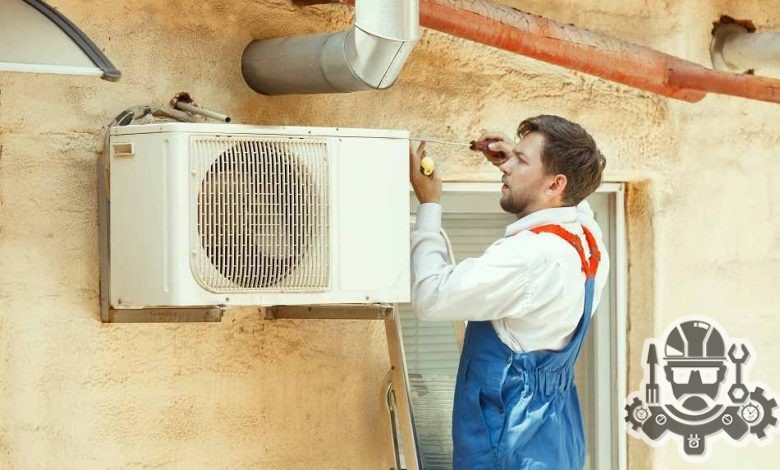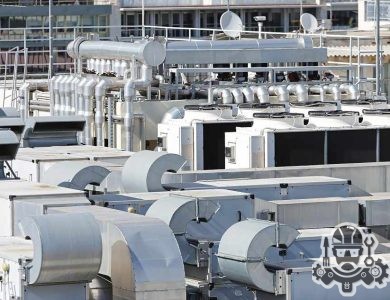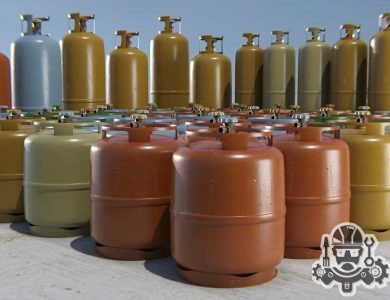What is Refrigerant?

Contents
- 1 Definition Of Refrigerant: Understanding Its Basic Role
- 2 Types Of Refrigerants: Categorization For Specific Purposes
- 3 Properties Of Refrigerants: Factors Affecting Their Efficiency
- 4 Refrigerant Cycle: The Fundamental Process
- 5 Refrigerant Safety: Precautions For Handling Chemicals
- 6 Refrigerant Leak: Causes And Dangers
- 7 Refrigerants And The Environment: Importance Of Careful Disposal
Definition Of Refrigerant: Understanding Its Basic Role
Refrigerants are chemical compounds that have the capability to absorb heat from their surroundings and then release that absorbed heat to another location. They are commonly used in refrigeration, air conditioning and heat pump systems.
Refrigerants work by absorbing heat when they change from a liquid to a gas state and then release heat when they change back from a gas to a liquid state. They are the key component in the refrigeration cycle, which is responsible for cooling and maintaining the desired temperature of an area.
Refrigerants can have varying chemical compositions, but they all serve the same basic purpose. They are used to transfer heat from inside a space (such as a room) to the outside environment. The proper selection and use of refrigerants is important to ensure the efficiency and safety of the cooling system.
| Type of refrigerants | Use |
|---|---|
| R-22 | commonly used in refrigeration and air conditioning |
| R-134a | used in automotive air conditioning systems |
| R-410A | commonly used in heat pump and air conditioning systems |
It is important to understand that not all refrigerants are created equal, and the selection of the appropriate refrigerant for a specific application is crucial. Some refrigerants are better suited for specific types of systems or environmental conditions. Refrigerants can also have varying environmental impacts, so it is important to consider the potential environmental impacts of a refrigerant when selecting one for use.
In conclusion, refrigerants play a crucial role in the function of refrigeration, air conditioning, and heat pump systems. The proper selection and use of refrigerants can impact the efficiency, safety, and environmental impact of these systems. Understanding the basic role of refrigerants is an important step in ensuring the successful operation of cooling systems.
Types Of Refrigerants: Categorization For Specific Purposes

Refrigerants are essential to the functioning of refrigeration systems. They are chemical compounds which are used to extract and move heat from one area to another, thereby cooling the space. Since refrigerants have different properties, they are categorized based on their specific purposes. Each type of refrigerant has its own set of advantages, disadvantages, and applications.
The four main types of refrigerants are hydrochlorofluorocarbons (HCFCs), chlorofluorocarbons (CFCs), hydrofluorocarbons (HFCs), and natural refrigerants. HCFCs and CFCs were commonly used in older refrigeration systems but, due to their harmful impact on the ozone layer, they have been phased out and are being replaced by HFCs. HFCs are less harmful to the environment but they still have a high global warming potential. Natural refrigerants, such as ammonia, carbon dioxide, and hydrocarbons, have received increasing attention due to their low environmental impact.
| Type of Refrigerant | Advantages | Disadvantages | Applications |
|---|---|---|---|
| HCFCs | Inexpensive, easy to handle | High global warming potential, harmful to the ozone layer | Commercial refrigeration, residential air conditioning |
| CFCs | Effective, good for high-temperature cooling | High global warming potential, harmful to the ozone layer | Industrial refrigeration, older home air conditioning units |
| HFCs | Low impact on the ozone layer, widely available | High global warming potential | Home air conditioning, commercial refrigeration |
| Natural Refrigerants | Low environmental impact, energy-efficient | Higher flammability and toxicity, requires specialized equipment | Industrial refrigeration, commercial refrigeration, air conditioning |
When selecting a refrigerant, it is important to consider factors such as cost, efficiency, safety, and environmental impact. The choice of refrigerant depends on the application and the specific needs of the system. For example, natural refrigerants may be more suitable for larger industrial refrigeration systems, while HFCs may be a better choice for smaller home air conditioning units.
Properties Of Refrigerants: Factors Affecting Their Efficiency
Refrigerants are an essential component of almost all cooling systems. They absorb the heat from the surroundings and transfer it to another location where it is released. But not all refrigerants are created equal. Different refrigerants have different properties that affect their efficiency. Understanding these properties is crucial to improving the efficiency of a cooling system.
Thermodynamic Properties
The efficiency of refrigerants depends largely on their thermodynamic properties. These properties include enthalpy, entropy, saturation temperature, and pressure. The enthalpy and entropy of a refrigerant determine their cooling capacity. The saturation temperature and pressure define the conditions under which the refrigerant can absorb and release heat. In general, refrigerants with higher cooling capacity and lower saturation temperature and pressure are more efficient.
| Property | Definition |
|---|---|
| Enthalpy | The amount of heat absorbed or released by the refrigerant during the phase change |
| Entropy | The measure of the disorder or randomness of the refrigerant molecules |
| Saturation temperature | The temperature at which the refrigerant changes its state from liquid to vapor or vice versa |
| Saturation pressure | The pressure at which the refrigerant changes its state from liquid to vapor or vice versa |
Chemical Stability
The efficiency of a refrigerant also depends on its chemical stability. The refrigerant should not react with any of the materials in the cooling system or with the moisture in the air. Otherwise, it may degrade and release harmful chemicals into the environment. Refrigerants with high chemical stability tend to be more efficient and have a longer lifespan.
Ozone Depletion Potential and Global Warming Potential
The environmental impact of refrigerants is an important consideration when choosing a refrigerant for a cooling system. Some refrigerants are known to deplete the ozone layer and contribute to global warming. The ozone depletion potential (ODP) and global warming potential (GWP) of a refrigerant highlight its environmental impact. Refrigerants with low ODP and GWP are preferred as they are less harmful to the environment.
In conclusion, the efficiency of refrigerants is influenced by various properties. Combining thermodynamic efficiency, chemical stability, and environmental impact, refrigerants can be chosen that are both efficient and safe for the environment.
Refrigerant Cycle: The Fundamental Process

Refrigeration cycle is the process through which the refrigerant circulates in a refrigeration system and undergoes several thermodynamic processes. The refrigeration cycle is crucial to the functioning of refrigeration and air conditioning systems. The cycle is composed of four basic steps, which are compression, condensation, expansion, and evaporation.
The first step of the refrigeration cycle is compression, where the refrigerant gas is compressed by the compressor to increase the temperature and pressure of the refrigerant. The hot refrigerant gas is then pushed through the condenser, where it flows through tubes and dissipates its heat to the surroundings.
| Step | Description |
|---|---|
| Compression | Refrigerant gas is compressed by the compressor to increase temperature and pressure of the refrigerant. |
| Condensation | Hot refrigerant gas is pushed through the condenser, where it flows through tubes and dissipates its heat to the surroundings. |
| Expansion | Cooled liquid refrigerant flows through an expansion device where it passes through a small orifice that reduces the pressure, allowing the temperature to drop. |
The third step is the expansion where the cooled liquid refrigerant flows through an expansion device. Here, it passes through a small orifice that reduces the pressure, allowing the temperature to drop. The last step is evaporation where the cool refrigerant is passed through the evaporator where it absorbs heat and turns into a low-pressure gas. This low-pressure gas is then sucked back into the compressor, and the cycle repeats again.
It is important to note that the refrigerant cycle requires a closed system to ensure the efficient operation of the refrigeration or air conditioning system. If there is a leak in the system, the refrigerant level drops, and the system becomes less efficient in cooling. Therefore, regular maintenance of the system is crucial to ensure its optimum performance.
Refrigerant Safety: Precautions For Handling Chemicals
Refrigerants are essential to the functioning of refrigeration systems. They work by absorbing and carrying heat away from an area, hence keeping it cool. However, like most chemical substances, refrigerants are not entirely safe to handle. They are often highly flammable, poisonous, and have other significant risks associated with them. Therefore, it is important for anyone who handles refrigerants to take the necessary precautions to prevent accidents and maximise safety.
Proper handling of refrigerants starts with storing them correctly. Refrigerants should be stored in clean, dry, and well-ventilated areas, away from any source of heat or open flame. It is also essential to keep them in their original containers and ensure they are sealed at all times. When moving refrigerants, use a hand truck or cart to avoid dropping or tipping the container. This is because any spillage could lead to a hazardous situation or contamination of the environment.
| Safety Precautions | Actions |
|---|---|
| Personal Protective Equipment | Wear gloves, goggles, and a respirator when handling refrigerants to protect skin, eyes, and lungs. |
| Avoid exposure to refrigerant | Ensure the workspace is well ventilated and avoid exposing skin to refrigerant. Wash hands thoroughly after handling refrigerant. |
| Fire Prevention | Avoid using refrigerants near open flames or other sources of heat. Have fire extinguishers on hand and ensure proper training in their use. |
It is also essential to wear appropriate personal protective equipment when handling refrigerants. Gloves, goggles, and a respirator are necessary to ensure skin, eyes and lungs are protected from potential harm. Additionally, avoid prolonged exposure to the refrigerants and ensure the area is well ventilated. It is essential to avoid contact with refrigerants, especially with bare skin, and wash hands thoroughly in case of contact.
Fire prevention is another essential factor when handling refrigerants. Flammable refrigerants can cause an explosion or a fire when exposed to an open flame or other heat sources. It is advisable to avoid using refrigerants near an open flame and have a fire extinguisher on hand in case of a fire outbreak. Personnel handling refrigerants should also have proper training in fire prevention, control and extinguishing techniques.
Refrigerant Leak: Causes And Dangers
A refrigerant leak can be a serious problem that requires immediate attention. Refrigerants are chemicals used in cooling systems, and when a leak occurs, these chemicals can escape into the air. There are several causes of refrigerant leaks, including improper installation, accidental damage, and lack of maintenance. However, no matter what the cause may be, the dangers of refrigerant leaks should not be ignored.
One of the biggest dangers of refrigerant leaks is that they can cause health problems. Refrigerants can irritate the skin, eyes, and lungs, and exposure to high levels of these chemicals can lead to serious health complications. In addition, refrigerants are also harmful to the environment, as they contribute to ozone depletion and global warming. Therefore, it is important to take precautions to prevent and address refrigerant leaks.
There are several signs that may indicate a refrigerant leak, such as reduced cooling capacity, hissing or bubbling sounds coming from the cooling system, or a frozen evaporator coil. If you suspect a refrigerant leak, it is important to contact a trained HVAC technician as soon as possible. They can identify the source of the leak, repair any damage, and recharge the system with the correct amount of refrigerant.
| Cause of Refrigerant Leaks | Dangers of Refrigerant Leaks |
|---|---|
| Improper installation | Health problems |
| Accidental damage | Environmental hazards |
| Lack of maintenance | Increased energy costs |
To prevent refrigerant leaks from occurring, it is important to have your cooling system inspected and maintained regularly by a licensed HVAC technician. This includes checking for any leaks, performing necessary repairs, and ensuring that the system is properly charged with refrigerant. Additionally, it is important to handle refrigerants safely and carefully to avoid accidental leaks or exposure.
Overall, a refrigerant leak can pose serious dangers to both your health and the environment. By taking precautions to prevent leaks and addressing them promptly when they do occur, you can help keep yourself and others safe and protect the planet from harmful environmental pollution.
Refrigerants And The Environment: Importance Of Careful Disposal
A refrigerant is a substance used in refrigeration systems to transfer heat from one location to another. Proper disposal of refrigerants is essential to prevent negative impacts on the environment. Many refrigerants contain harmful chemicals that can cause air and water pollution. Improper disposal can lead to contamination of soil and water, as well as contribute to the depletion of the ozone layer.
It is important to understand the proper steps for disposing of refrigerants. The first step is to recover the refrigerant from the system. This can be done by certified technicians who use specialized equipment to safely remove the refrigerant. Once the refrigerant has been recovered, it must be stored in containers that meet regulatory requirements. The containers must be labeled with the type and quantity of refrigerant inside.
| Important steps for proper disposal of refrigerants: | |
|---|---|
|
 |
Once the refrigerant has been properly stored in containers, it must be transported to a certified reclamation facility for proper disposal. These facilities use specialized equipment to remove impurities from the refrigerants and separate them into individual chemicals. The purified chemicals can be reused or sold to manufacturers for use in new products.
It is important to follow local, state, and federal regulations when disposing of refrigerants. These regulations ensure that the environment is protected and that the disposal process is carried out safely and efficiently. Failure to follow these regulations can result in fines and legal consequences.
In conclusion, proper disposal of refrigerants is crucial to prevent negative impacts on the environment. It is important to understand the steps involved in disposal and to ensure that all regulations are followed. By taking these steps, we can help protect our environment and ensure that refrigeration systems continue to function safely and efficiently.



